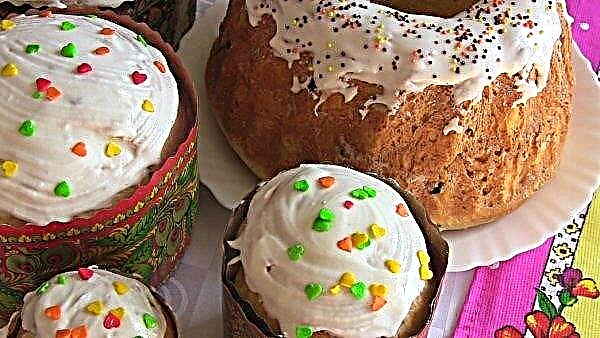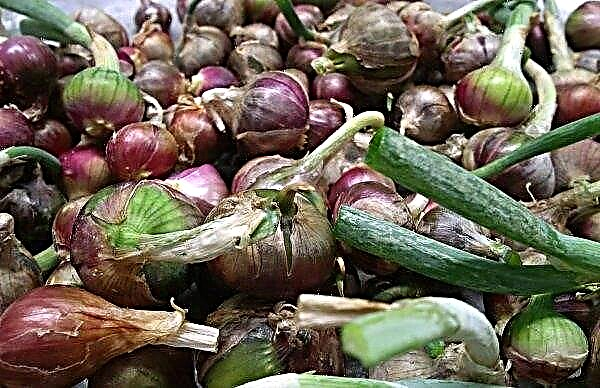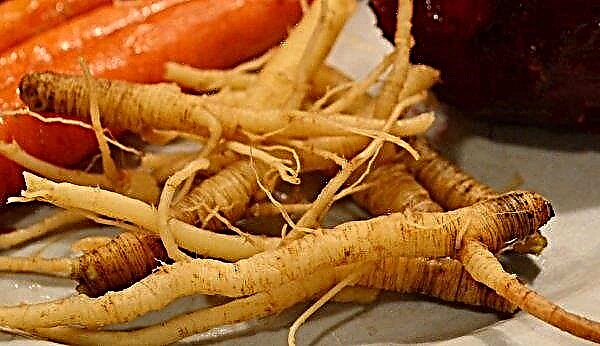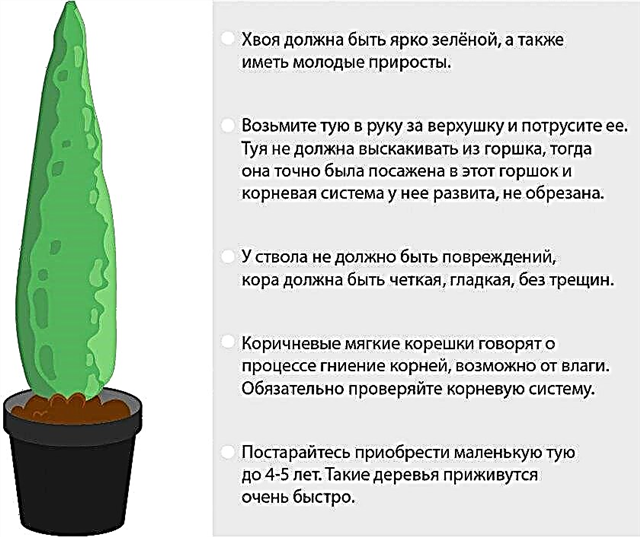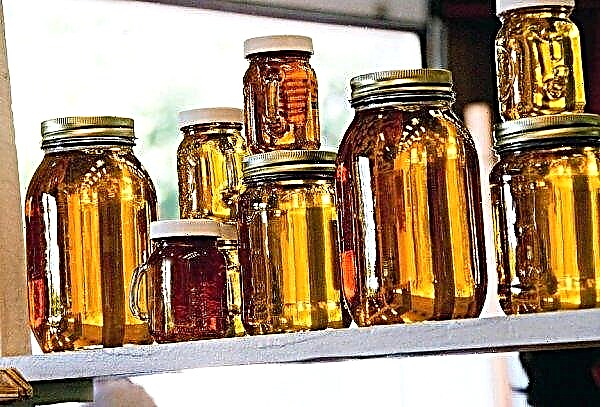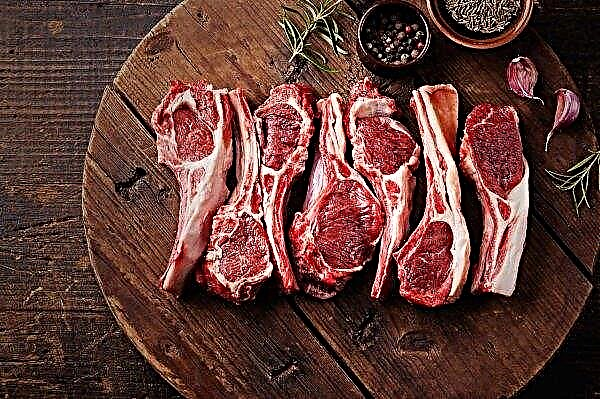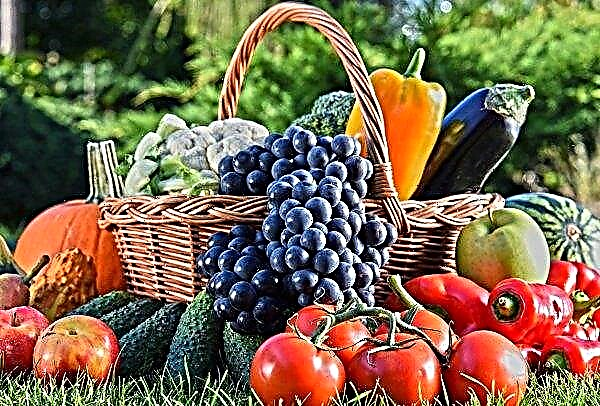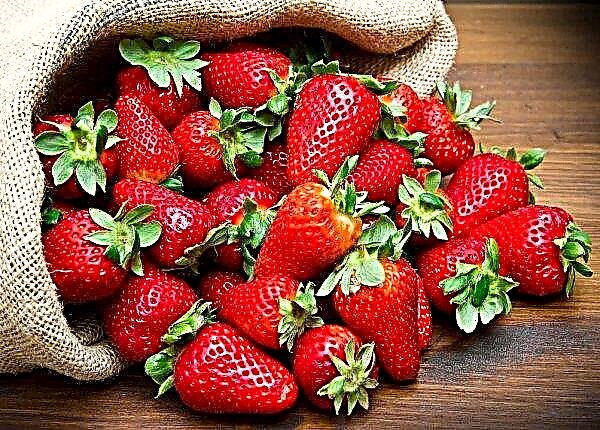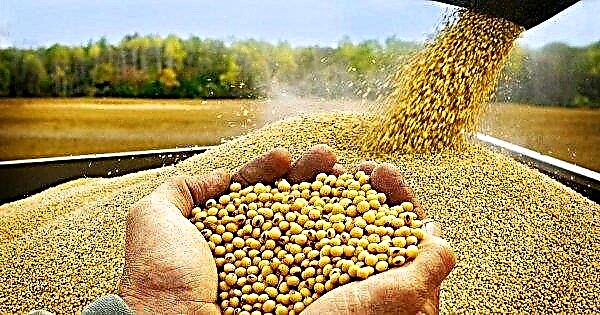Hydrangea Alpengluhen (Hydrangea macrophylla Alpengluhen) is a popular ornamental shrub. Many gardeners prefer to grow a variety because of its unpretentiousness and thanks to valuable decorative qualities. The greenery of the plant has a saturated green color, the flowers are usually bright red, which creates a spectacular contrast and gives a festive look to the infield.
Description and characteristics of the variety
The shrub grows to 1.5 m in height. Branches are straight, with inflorescences at the ends. The leaves are large (5–7 cm), saturated green, in the form of ovals with pointed ends. Flowering begins in mid-July and lasts until the end of September. The inflorescences are in the form of balls of red or saturated pink in diameter of 20–25 cm. The color of the flowers depends on the acidity of the soil: the more alkaline the composition of the soil, the brighter the flowers.
Hydrangea macrophylla Alpengluhen comes from tropical latitudes, therefore it is thermophilic and needs frequent plentiful watering. The variety is unpretentious, has excellent aesthetic qualities, and is also very popular due to the long flowering period. With improper care, the plant is often affected by pathogenic microbes and harmful insects.
Did you know? Despite its beauty, hydrangea is a poisonous plant that accumulates aluminum and cyanogenic components.
Landing
Before rooting hydrangea Alpengluchen, you should familiarize yourself with the preferences of the plant and the subtleties of planting. Knowing and observing simple rules, you can count on a good survival rate of seedlings.
The most successful time for rooting hydrangea Alpengluchen is considered to be April-May, as well as the period from August to October. Given that the culture is thermophilic, in the northern latitudes its landing is possible only in the spring.
Site selection and soil preparation
Hydrangea Alpengluhen develops well and grows quickly in sunny areas, as well as in partial shade. A complete shadow is contraindicated to the plant; under such conditions, the shrub withers and blooms poorly. Hydrangea is demanding on the composition of the soil.
It does not tolerate the calcareous composition of the soil. It is best suited to it acidic nutrient soils with a pH of 5. When planting a plant in a planting pit, special soil mixture is added: humus, peat, sand in a ratio of 2: 1: 1.
Despite the fact that the plant is very hygrophilous, it does not tolerate prolonged flooding of the root system. Care should be taken of the drainage system. With a close location of groundwater to the surface, it is necessary to plant a bush on a hill.
Algorithm
Planting a young plant is as follows:
- Dig a 30 × 30 × 30 cm planting hole.
- Put claydite, crushed stone or broken brick with a layer of 5 cm as drainage on the bottom of the hole.
- Place the seedling in a hole vertically in the center.
- Spread the roots gently.
- Sprinkle the rhizome with a pre-prepared soil mixture and lightly tamp.
- Leave the root neck at ground level.
- After the earth is tamped, young hydrangea must be poured with 10 liters of water.
- Mulch the trunk circle with humus, peat, needles or sawdust.
- When water is absorbed, the earth must be loosened to a depth of not more than 5 cm.

Care
To achieve good results in the cultivation of hydrangea Alpengluchen and get a beautiful shrub with luxurious inflorescences, you need to take care of it. Culture does not require special efforts, however, like any plant, it will gratefully respond to compliance with the rules of agricultural technology.
Did you know? If the hydrangea bush is watered with alum on only one side, then one can achieve the appearance of inflorescences of a different shade on one plant (where the soil is more acidic, the flowers will be brighter and more juicy).
Watering and mulching
Hydrangea needs plentiful watering. For starters, a young shrub should be planted in well-moistened soil and still watered after rooting. Further, throughout the warm season, each bush should be regularly watered. In dry times, watering is carried out 2 times a week, if there was rainfall, then hydrangea should be watered after 7 days. For every adult bush you need 30-50 liters of water. 
After planting a young plant, the trunk circle should be mulched with humus, sawdust, pine needles or peat with a layer of 3 cm. This will help prevent excessive evaporation of moisture.
Loosening and weeding
Experienced gardeners recommend loosening the soil in the near-stem circle of the bush 3 times per season after irrigation. Weeding is carried out shallow (5 cm), in connection with the surface occurrence of the root system.
At this time, weeds that can drown out the growth of hydrangea should be removed. In the fall, around November, the bush is spud. The height of the soil embankment around the trunk should be no more than 30 cm.
Top dressing
In order for hydrangea to please the owners with the appearance of large succulent inflorescences, and also not be susceptible to diseases and frostbite in the winter, it must be properly and timely fed.
Important! As a fertilizer for hydrangea, you can not use a solution of ash. This leads to soil leaching and plant death.
For top dressing, mineral and organic fertilizers are used according to this scheme:
- Immediately after rooting, the young plant must be watered with a light pink solution of potassium permanganate. This will help kill pathogenic bacteria and prevent rotting of young roots.
- An adult plant in the spring at the beginning of the vegetative period is fed with a mixture of urea (25 g per 1 m²), superphosphate (35 g per 1 m²) and potassium sulfur (30 g per 1 m²). This will allow the plant to quickly gain green mass.
- During the appearance of flower buds, superphosphate (70 g per 1 m²) and potassium sulfate (40 g per 1 m²) are introduced into the soil. This procedure contributes to a long colorful flowering.
- In late August - early September, 15 kg of humus are added under each bush. Such top dressing strengthens the plant's immunity, and makes it possible to stock up with the necessary substances before a cold pore.
- Before shelter for the winter, the shrub is treated with a 2% solution of Bordeaux fluid. This procedure prevents the development of fungal diseases under the covering material.

Pruning
Sanitary pruning is carried out in early spring before the movement of juices. At this time, broken, frozen out, damaged shoots are removed. Young bushes do not require molding pruning. Adult Alpenglyuchen is trimmed carefully so that the kidneys formed in the fall are not damaged. It is undesirable to shorten lignified shoots.
If you have to do this, then you need to cut them to a minimum. Green shoots can be removed if necessary throughout the season. During flowering, 1/3 of the branches on which there are no inflorescences are cut off at a distance of 20 cm from the ground. Next year, such pruned branches will bloom.
Shelter for the winter
Hydrangea macrophylla Alpengluhen withstands frosts down to –18 ° С. For winter, it is recommended to shelter the plant. In the northern regions, this species is not cultivated at all.
Important! For a successful wintering hydrangea before shelter must be abundantly moistened. This will allow her to maintain immunity and frost resistance.
The preparation of the bush for winter is as follows:
- in late autumn, the plant is spudded or sprinkled with peat to a height of 30 cm;
- remove greenery from the branches and bend them to the ground (you can fix it with an iron bracket or crushing it with a brick);
- to wrap up shoots with non-woven material (spunbond);
- throw dry foliage and hay on top;
- cover everything with a film, which is fixed with loads (brick, logs).
 1- tilted shoots, 2 -cocking, 3- spruce branches, 4- lutrasil, 5- stone
1- tilted shoots, 2 -cocking, 3- spruce branches, 4- lutrasil, 5- stoneBreeding
Propagating hydrangea is quite problematic. Not every newcomer will agree to make such an amount of effort to get results. However, this is an interesting matter, and subsequently there is an opportunity to proudly demonstrate the fruits of their labor.
Cuttings
Cuttings are harvested at the beginning of the summer season (May-June). Lignified shoots rarely produce roots, so you should take green ones. The basal branches have a greater survival rate and are less likely to get sick than the lateral ones. Shanks taken from the shady side take root more easily than those that were in the sun. Planting material can be placed in a growth promoter and then rooted in a pot. Then you get indoor hydrangea, which can be transplanted into the open ground for the next season.
Planting material can be placed in a growth promoter and then rooted in a pot. Then you get indoor hydrangea, which can be transplanted into the open ground for the next season.
For harvesting the cuttings, it is better to take branches where the leaf plates are small. Material can be taken exclusively from a healthy plant up to 12 years. Cuttings are cut into a length of 15–20 cm. Their thickness is not more than 7 mm. Each specimen should have at least 4 developed growth buds.
Layering
Hydrangea are propagated by layering in early spring until buds open. Around the mother plant, the soil is loosened. From the side shoots, tear the foliage In the soil, make indentations of 2 cm and bend there and fix the shoots intended for rooting. Watering layering is carried out every day. The soil must be moist. At the end of the summer period, layering will take root and form new shoots.
 Sprinkle layers with earth so that the top remains. You can fix them using wire brackets.
Sprinkle layers with earth so that the top remains. You can fix them using wire brackets.
When the shoots on the layering grow by 25 cm, carry out their hilling. By October, half-meter plants are dug up and divided. Such planting material is dug into the ground. In winter, they throw more snow on top to maintain heat.
Important! With the arrival of spring heat, seedlings take root in open ground for temporary growth. At a permanent place lay off at the age of 1 year.
Dividing the bush
The procedure is carried out in early spring before the start of the growing season. The soil around the plant is abundantly watered. After the earth softens, the bush is carefully removed along with the rhizome. It is divided into several separate plants, making sure that the roots remain intact. Each part is rooted in open ground like a young seedling.

Diseases and Pests
Alpenglyuchen does not often suffer from diseases. In violation of the rules of agricultural technology and insufficiently acidic soil composition, the shrub can be affected by chlorosis. The disease manifests itself in the fact that the green mass of hydrangea acquires a noticeably lighter shade compared to the original.
 Chlorosis can be eliminated using a solution of potassium nitrate (bought in a store, used according to the instructions), which treat the affected areas.
Chlorosis can be eliminated using a solution of potassium nitrate (bought in a store, used according to the instructions), which treat the affected areas.
Sometimes downy mildew appears on the leaves, which leads to the appearance of patches of dark color. In the fight against downy mildew, a copper-soap solution is used. To do this, 100 g of laundry soap is dissolved in 9 l of hot water and 10 g of copper sulfate diluted in 1 l of water are poured there.
Pests practically do not touch hydrangea. Occasionally there are invasions of snails that damage the green mass of the plant. They are fighting them by hand.
Application in landscape design
Macrophylla Alpengluhen is in demand both by simple amateur gardeners and professional designers, and is often used in landscape compositions. One of its advantages is late flowering time. She is able to please them at a time when most other cultures have already faded.
Hydrangea can be planted alone on the background of a green lawn or in company with evergreen conifers, whose needles have a beneficial effect on soil composition when falling. Perhaps a combination with deciduous crops or other types of flowering shrubs.
Large-leaved hydrangea varieties Alpenglyuchen is considered one of the most beautiful. Hydrangea can be grown independently, but it is easier to purchase seedlings in proven nurseries. The planting and plant care algorithm is not complicated and is accessible even to an amateur gardener. Your efforts will be rewarded with magnificent splendor of flowering shrubs, which will delight others.



